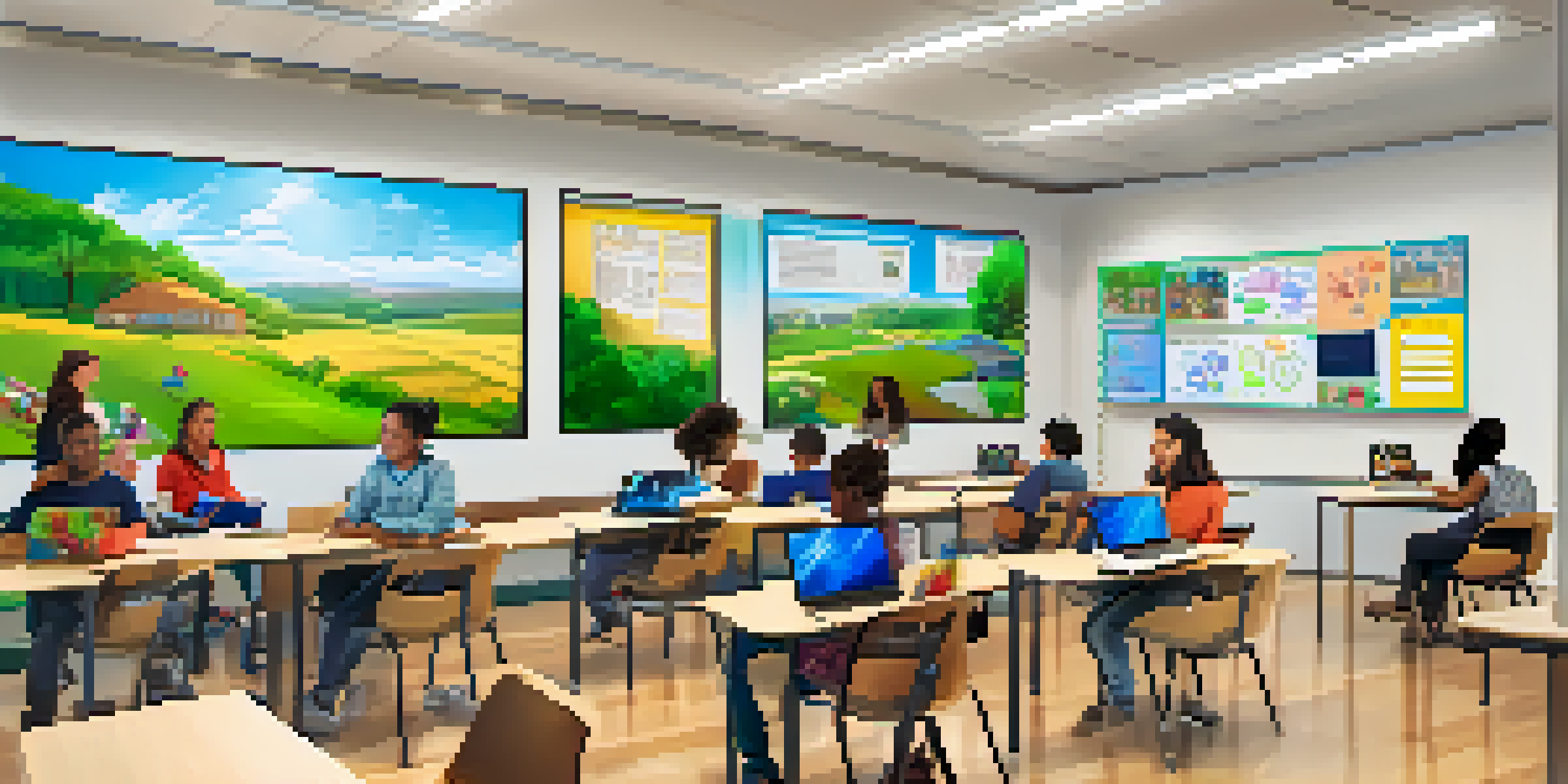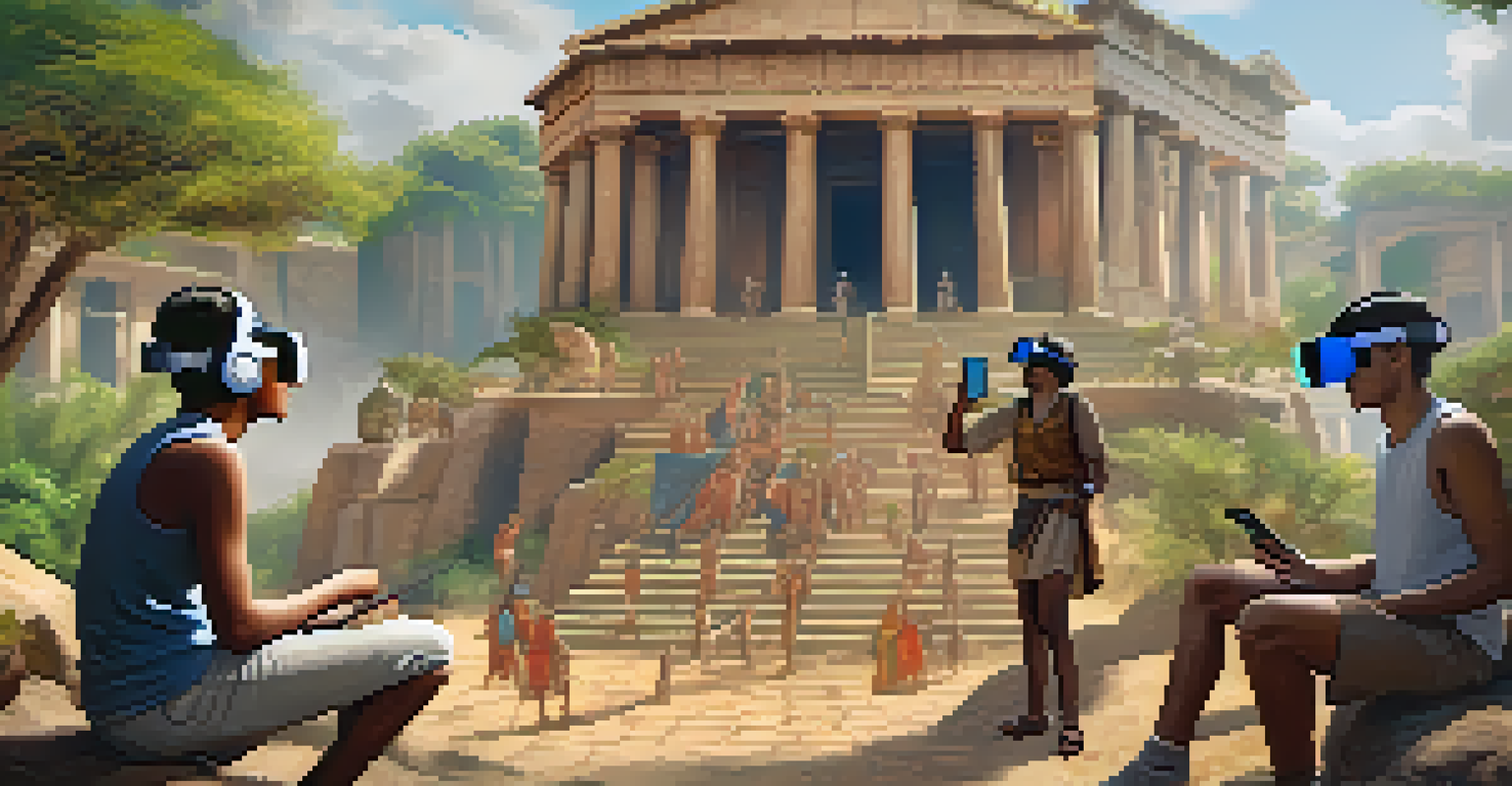Interactivity in Digital Learning: Engaging Modern Learners

Understanding Interactivity in Digital Learning Environments
Interactivity in digital learning refers to the ways learners can engage with content, instructors, and fellow students. It transforms a passive learning experience into an active one, allowing learners to participate in discussions, complete interactive exercises, and receive real-time feedback. This shift from traditional, lecture-based methods to a more hands-on approach can significantly enhance the learning experience.
In teaching, we must engage the students, make their learning interactive, and connect with them on a personal level.
Consider how a simple quiz can turn a monotonous learning session into an engaging challenge. When learners interact with the material, they are more likely to retain information and apply it effectively. By integrating tools like polls, discussions, and multimedia, educators can create a rich tapestry of learning opportunities that cater to various learning styles.
Ultimately, understanding interactivity is the first step toward enhancing digital learning. When learners feel involved and invested in their education, they are more likely to succeed, making interactivity a crucial component in modern educational strategies.
The Importance of Engagement for Modern Learners
Engagement is the heartbeat of effective learning. In today’s fast-paced world, learners are bombarded with information, making it vital for educational content to capture their attention. Engaged learners not only absorb material more effectively but also develop critical thinking and problem-solving skills that are essential in the 21st century.

Imagine a classroom where students eagerly participate in discussions, ask questions, and collaborate on projects. This vibrant atmosphere fosters a sense of community and belonging, encouraging learners to take ownership of their educational journey. Engagement transforms learning from a chore into an enjoyable pursuit.
Interactivity Enhances Learning
Engaging learners through interactive tools transforms passive learning into an active, participatory experience.
By prioritizing engagement through interactive elements, educators can significantly enhance the learning experience. When students feel connected to the material, their motivation and enthusiasm for learning soar, leading to better outcomes and a deeper understanding of the subject matter.
Interactive Tools: Enhancing Learning Experiences
There’s a plethora of tools available today that promote interactivity in digital learning. From gamified learning platforms to virtual reality simulations, these resources provide unique ways for learners to engage with content. For instance, platforms like Kahoot! allow educators to create fun, competitive quizzes that not only test knowledge but also encourage participation.
The best way to predict the future is to create it.
Moreover, discussion forums and collaborative projects foster peer-to-peer interaction, which is equally valuable. When learners share insights and collaborate, they enrich their own understanding and gain different perspectives. This collaborative spirit is crucial for developing communication skills and teamwork.
Incorporating these interactive tools not only makes learning enjoyable but also caters to diverse learning preferences. By combining traditional instructional methods with modern technology, educators can create a dynamic environment that appeals to all types of learners.
Benefits of Gamification in Digital Learning
Gamification is a powerful way to introduce interactivity into digital learning. By incorporating game-like elements such as points, badges, and leaderboards, educators can motivate learners to engage more deeply with the content. This approach taps into the inherent human love for competition and achievement, making learning feel more rewarding.
Take, for example, an online course that uses a points system to reward participation and progress. Learners become more invested in their performance, pushing themselves to complete modules and engage with peers. This sense of accomplishment not only boosts motivation but also enhances retention.
Gamification Boosts Motivation
Incorporating game-like elements in education motivates learners by making the learning process feel rewarding and enjoyable.
Ultimately, gamification transforms the learning process into an engaging adventure. When learners enjoy the journey, they are more likely to explore new concepts and develop a lifelong love for learning.
Personalizing Learning Through Interactivity
One of the most significant advantages of interactivity in digital learning is the ability to personalize the experience. Through interactive tools, educators can tailor lessons to meet the unique needs and preferences of each learner. This personalized approach ensures that students receive the support they need to thrive.
For instance, adaptive learning technologies can assess a learner's progress and adjust the difficulty level accordingly. If a student excels in certain areas, the system can present more challenging material, keeping them engaged. Conversely, if a learner struggles, it can provide additional resources to help them catch up.
By embracing personalization, educators can create a more inclusive learning environment. When learners feel that their individual needs are recognized and addressed, they are more likely to stay motivated and committed to their educational journey.
Building Community in Online Learning Environments
Interactivity fosters a sense of community among learners, even in online environments. Through discussion boards, group projects, and interactive webinars, students can connect with one another and build relationships. This sense of belonging is crucial, as it encourages learners to share ideas and support each other.
Think of an online course where participants collaborate on a project via video conferencing. This not only allows them to brainstorm and share feedback, but also creates lasting connections. When learners know they are part of a supportive community, they feel more motivated to engage actively.
Personalized Learning Matters
Interactive tools allow educators to tailor lessons to individual needs, fostering a more inclusive and supportive learning environment.
Community building through interactivity enhances the overall learning experience. As learners interact and collaborate, they not only deepen their understanding of the material but also develop essential social skills that are valuable in both academic and professional settings.
Future Trends in Interactive Digital Learning
As technology continues to evolve, so too will the landscape of interactive digital learning. Emerging trends like artificial intelligence and augmented reality are set to revolutionize how education is delivered. These innovations will enable even more immersive and engaging learning experiences.
For instance, imagine a future where learners can explore ancient civilizations through virtual reality, interacting with the environment and experiencing history firsthand. These types of experiences can make learning more impactful and memorable, allowing students to connect concepts with real-world applications.

Staying abreast of these trends is essential for educators seeking to create engaging and effective learning environments. By embracing new technologies, educators can ensure their teaching methods remain relevant and impactful, ultimately enhancing learner engagement.